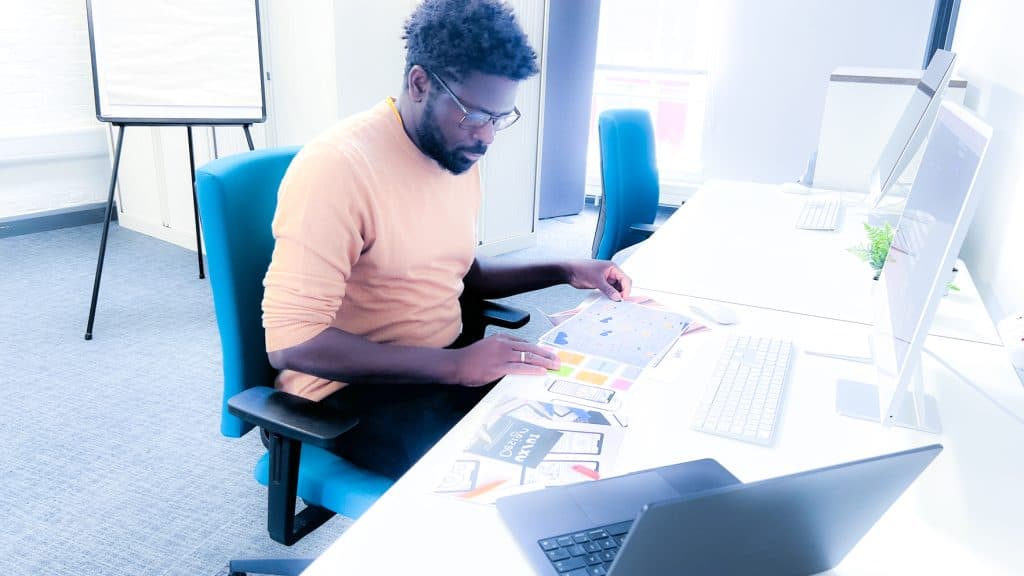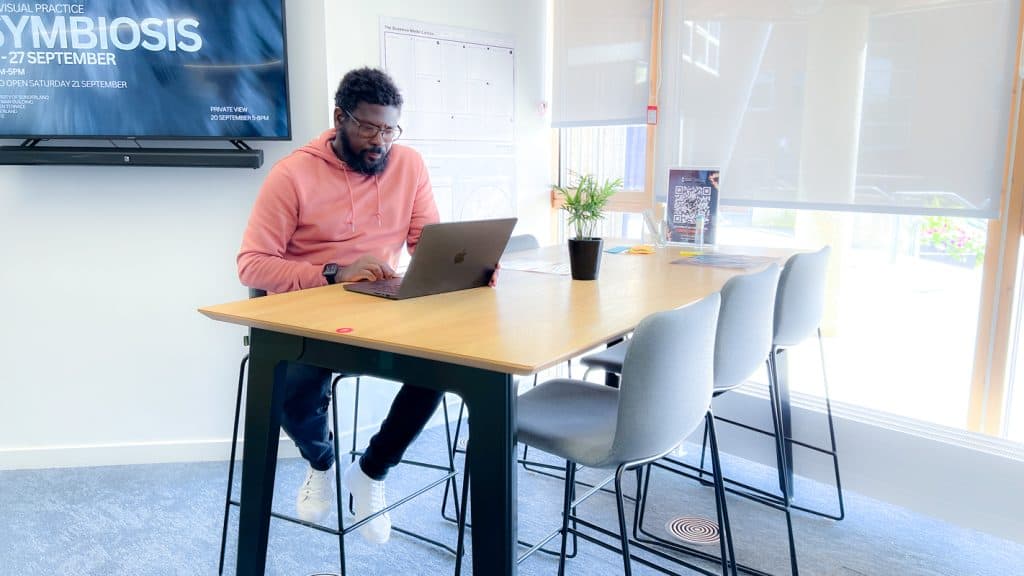The concept of empathy is more important than ever, but what exactly does empathy in design mean, and how can we leverage it to create successful products?
This article explores the power of empathy in design, unpacking its benefits and offering practical tips on incorporating it into your design process.
Now let me break it down for you to get a better Understanding of Empathy in Design.
Empathy goes beyond simply understanding users. It’s about stepping into their shoes, experiencing the world from their perspective, and grasping their emotions, motivations, and challenges.
In UX design, this translates to creating products that are not only functional but also resonate with users on a deeper level. It’s about avoiding the trap of designing for ourselves or idealised versions of users, which can lead to confusing and frustrating products.
There are two key types of empathy that play a crucial role in design. The first is, Cognitive Empathy. This is the intellectual side of empathy, focusing on how users think, process information, and make decisions. User research techniques like interviews, surveys, and usability testing help us gather data and analyse user behaviour to understand their cognitive processes. And we have affective empathy.
Affective Empathy: This is the emotional side of empathy. It’s about understanding how users feel when interacting with a product. Techniques like user observation and scenario building can help us cultivate this type of empathy.
By combining both cognitive and affective empathy, we gain a holistic understanding of our users and design products that meet their practical and emotional needs. I will explain how to put empathy into action but first let me highlights the benefits of designing with empathy.
There are numerous advantages to incorporating empathy into your design process:
Increased Usability: Understanding user needs leads to interfaces that are intuitive and easy to navigate. Imagine designing a kitchen; you wouldn’t put the oven behind the fridge, would you? The same principle applies to designing user interfaces.
Reduced Development Costs: By identifying usability issues early on through empathy-driven design, you can save time and money compared to fixing problems after launch.
Improved Brand Loyalty: When users feel understood and valued, they’re more likely to become loyal to your brand. Empathy builds trust and fosters positive brand experiences.
Innovation: By looking beyond, the surface and understanding users’ deeper needs, you might discover entirely new solutions to problems. Empathy can spark innovation and unlock new possibilities. Now let’s talk about how you can put empathy into action.
So how can you translate empathy into concrete actions within your design process, you may ask? Here are some key steps:
1. Develop User Personas: Create fictional representations of your target users, including details about their demographics, goals, needs, and pain points. This keeps the user at the centre of your design thinking.
2. Conduct User Research: Utilize various techniques like interviews, surveys, usability testing, and even ethnography (observing users in their natural environment) to gather user insights.
3. Create Empathy Maps: This visual tool helps capture what users see, hear, say, do, feel, and think. It’s a powerful way to understand the user journey and identify areas for improvement.
4. Embrace User Feedback: Actively seek feedback from users throughout the design process. Conduct usability testing, run A/B tests, or simply talk to users directly.
5. Iterate and Improve: The design process is never truly finished. By continuously gathering user feedback and refining your designs based on empathy, you can ensure your product remains user centred.
Let’s look at some real-world examples of how empathy has been used to create successful products:
Accessibility Features: Consider features like screen reader compatibility, increased colour contrast, and larger fonts for visually impaired users. This ensures everyone can interact with the product effectively.
Clear Error Messages: Cryptic error messages are frustrating. Empathetic design means crafting clear and concise messages that explain the problem and offer solutions.
Progressive Onboarding: New users can feel overwhelmed by complex applications. Empathic design incorporates progressive onboarding, introducing features gradually to avoid information overload.
Empty State Design: A blank screen upon opening an app can be confusing. Empathetic design considers these “empty states” and uses them to guide users or provide helpful information.
The power of empathy extends far beyond the digital realm. Here are a few examples:
MRI Machines for Kids: Giant, loud MRI machines can be scary for children. GE Healthcare’s “Pirate Adventure” transforms the experience into a pirate ship adventure, making scans less stressful for children and improving scan quality.
Subtitles on Streaming Services: Subtitles seem like a no-brainer, but they’re a fantastic example of empathy in action, opening up a world of entertainment for deaf and hard-of-hearing people.
Accessibility Features in Public Spaces: Ramps, elevators, and wider doorways are common today, but they’re a big deal for people with disabilities. These features ensure everyone can navigate and participate in everyday activities.
Adjustable Desks: Standing desks are great, but not for everyone all the time. Adjustable desks cater to this by allowing users to switch between sitting and standing, promoting comfort and health for a wider range of users.
These examples showcase how empathy can make a real difference in the design of physical spaces and products as well.
The benefits of empathy extend beyond the initial creation of a product. It unlocks success across various aspects of a business:
Marketing & Sales: Understanding customer needs allows crafting targeted messaging that resonates with them.
Customer Support: Empathy fosters better communication, leading to faster problem resolution and improved customer satisfaction.
Company Culture: Empathy within a company promotes collaboration, innovation, and a more positive work environment.
Empathy truly has the power to transform design and business practices for the better. But don’t forget it has its own challenges. Now let’s take a look at some of the challenges of empathetic design.
While powerful, incorporating empathy into design isn’t always straightforward. Here are some hurdles to consider.
Designer Bias: We tend to favor information that confirms our existing beliefs. Surround yourself with user research and diverse perspectives to challenge assumptions. As a designer, explain things clearly, acknowledging users may not have the same level of expertise.
Time & Resource Constraints: Stakeholders might push for faster development cycles. Communicate the value of user research and prioritize key features for iteration. Consider using surveys and A/B testing alongside in-person research for larger audiences.
Challenges in User Research: People might struggle to articulate their exact needs. Use observation techniques and scenario building to uncover deeper insights. Remember the “Paradox of Choice”: too many options can lead to decision paralysis. Focus on core functionalities based on user research.
Collaboration & Communication: Getting buy-in from stakeholders who may not understand the value of empathy in design. Use data and user stories to showcase the benefits. Clearly translate user research findings into design decisions, and develop a system for documenting and sharing user research effectively.
The good news is that empathy is a skill you can cultivate. Here are some tips: First, practice active listening. When interacting with users, truly listen to what they’re saying, both verbally and nonverbally. This means paying attention to their words, tone of voice, and body language to fully understand their perspective and feelings.
Second, learn from resources. There are many books and articles available that can help you develop your empathy skills. These resources often provide valuable insights and techniques that can enhance your ability to empathize with others.
Finally, seek diverse perspectives. Spend time with people from different backgrounds to broaden your understanding. Engaging with individuals who have different experiences and viewpoints can enrich your empathy and help you relate to a wider range of people.
As technology evolves, the way we interact with products and services will continue to change. However, the importance of empathy in design will remain constant. By understanding users on a deeper level, we can create products and services that are not only usable but also delightful.
Incorporating empathy into your design process, whether you’re a UX professional, marketer, designer, or customer support representative, can significantly impact the world. Let’s all strive to design with empathy!
Empathy is the bridge between us and the people we design for. It’s the secret ingredient that transforms good design into great design, fostering positive experiences and building trust. So, the next time you embark on a design project, take a moment to step outside yourself and into the shoes of your users. Ask yourself:
• What are their hopes and dreams?
• What challenges do they face?
• How can your design make their lives a little bit easier, or a lot more amazing?
By approaching design with empathy, you can create products and experiences that resonate on a deeper level, leaving a lasting impact on the world.
Remember, empathy is a journey, not a destination. Embrace the ongoing process of learning and understanding your users. As you refine your empathy muscle, you’ll not only become a better designer, but also contribute to a more human-centered future for us all.
Thank you for reading!






